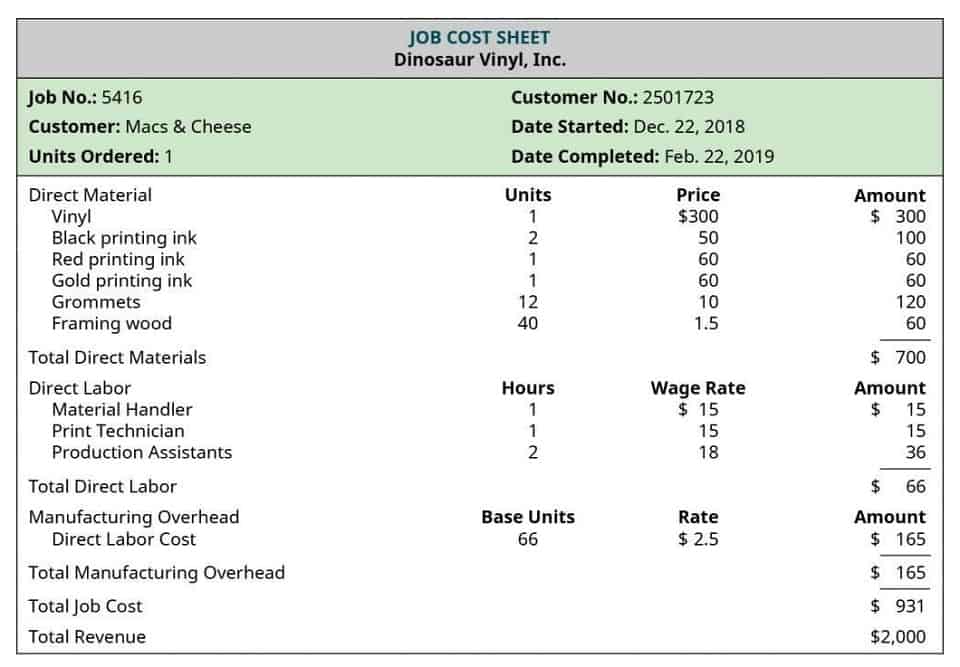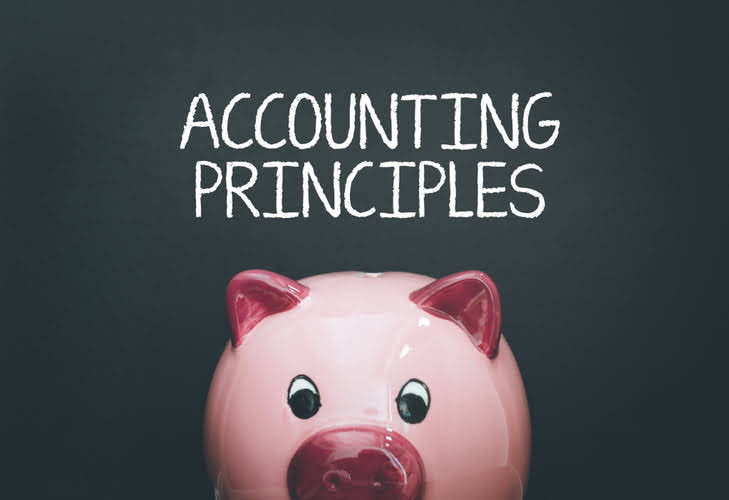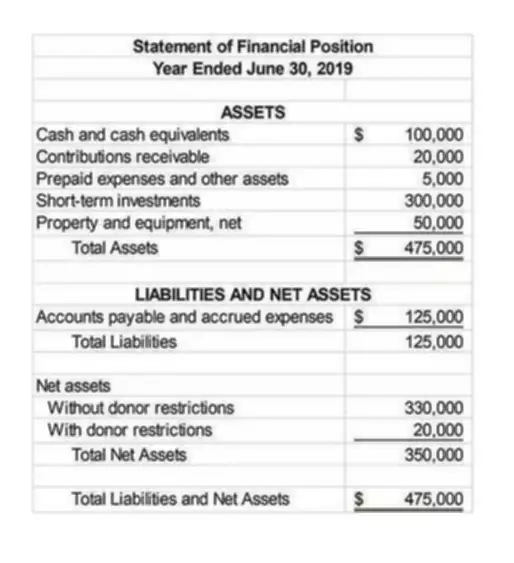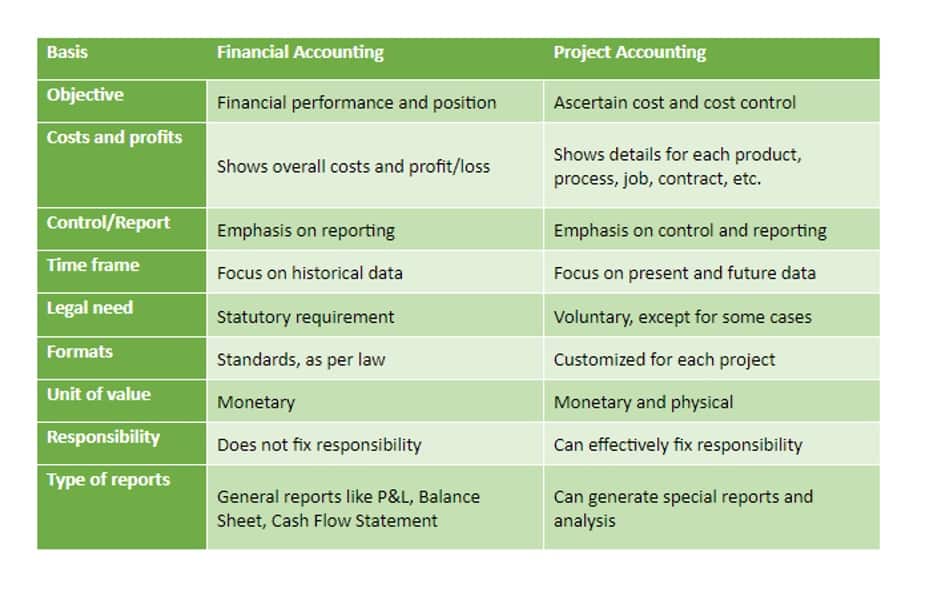What is an Invoice Number? Invoice Numbering Guide

This could cover return policies, warranties, or any other relevant information. This is required for tax compliance and to advise the buyer of additional expenses. Typical terms are “Net 30” or “Net 14”—meaning 30 days or 14 days, respectively. Each product you charge for should be entered as a separate line item, with a price and quantity.
Can an invoice replace a receipt?
Jami has collaborated with clients large and small in the technology, financial, and post-secondary fields. As long as you’ve met the requirements of a legal invoice, it’s largely up to you what else you include. However, you should never include unclear product/service descriptions, spelling or math mistakes, or incorrect contact information for either you or the other party. There are several types of invoices, each with its own specific application in the business world. Some companies may only use one or two of these invoice variants, while others might use nearly all of them on a recurring invoice basis.

Do you need an invoice tracking feature?
To effectively implement these strategies, it is important to clearly indicate them on the invoice. Between Curdbee & their new version, Hiveage, I’ve brought in more than $310,000 than I would otherwise not have. If I ever need to send an invoice, I know it’s gonna work, and I know they’re gonna get it, and I’ll know when they’ve seen it and paid or not paid it. At https://www.facebook.com/BooksTimeInc/ least if everything else gets hard, I know I’ve got a system there that’ll let me get paid. I’ve been using Hiveage’s predecessor Curdbee for years, and Hiveage improves on Curdbee in every way.

Best Practices for Creating a Standard Invoice
Discover the power of an invoice number as a vital tool for organizing and tracking billing activities in your business. Learn why it’s crucial to have one when invoicing customers and how you can leverage it for maximum efficiency. There are no rules as to the invoice numbering system, apart from them being alphanumeric (they may include numbers and letters). Invoice numbers typically don’t contain special symbols or characters. The following are some common methods you can use to assign invoice numbers. Continually changing your unique invoice number methodology creates confusion for you and your customers.
- The interface is polished, fast, fluid and intuitive, and the amount of features available are pretty amazing.
- It allows businesses to avoid duplicate payments or missing invoices, which can cause discrepancies in financial statements.
- As a freelancer or business owner, invoice numbers are useful for both accounting and payment tracking purposes, especially if you issue multiple invoices each month.
- Companies may opt to send a month-end statement as the invoice for all outstanding transactions.
- These tools frequently include pre-designed templates, automated calculations, and payment tracking, which lowers the possibility of errors and saves valuable time.
This yearly system allows you to quickly see which year an invoice is issued and follows the sequential numbering requirement. Also, a business can use the name of a business unit or project as a reference for invoice numbers. Otherwise, clients will reject invoices, as it makes it cumbersome for them to track payments; if the vendor loses the tracking, he has to spend time reissuing the invoice.
Where is the invoice number typically located on an invoice document?
A value-based invoice charges your clients based on the perceived value of the service rather than the cost of inputs or time spent. When you use the tool, it automatically saves your info, so you can create invoices more quickly in the future. There’s a good selection of simple invoice templates for both invoice number meaning Google Doc and Google Sheets available from Invoice Simple.

How to create an invoice?

To keep track of your invoicing, each invoice should have a unique number that follows a sequence. Thus, each invoice number will be distinct, but there will be an easily understandable sequence for how they are assigned to invoices. With Hiveage you can send elegant invoices to your customers, accept online payments, and manage your team — all in one place. If you wish to change your numbering system, you can do this at the beginning of a new quarter, so you don’t mess up the current method. If you want to delete an invoice, you’ll need to mark this transaction within your records to avoid creating a gap. If you miss a number or delete an invoice, this error will create a gap within your financial records.
- By using these tools in conjunction with free invoice templates, businesses can achieve greater efficiency and professionalism in managing their finances.
- Invoices not only help businesses track their sales and revenue, but they also provide legal documentation for payment obligations.
- If you’re selling to a business, the invoiced amount gets entered as accounts payable on their end—money coming out of their pocket.
- However, to organize this information so it’s user-friendly and productive, there are a few invoice number format best practices you should keep in mind.
- A key way streamline your invoicing efforts, is to make the payment process easy.
- A pro forma invoice is a preliminary bill of sale sent to buyers in advance of a shipment or delivery of goods.
- Start with longer numbers for your first invoice and go up from there.
Interim Invoice vs. Standard Invoice
By using QuickBooks, you can create electronic invoices and accept payments from one location, improving the overall transaction for your team and your clients. Invoices can sometimes be confused with purchase orders, but these documents serve different purposes, with sellers issuing invoices and the buyers issuing purchase orders (PO). You also need to make sure that your clients make their payments on time. So, to avoid any delay on the part of your customers, it’s important that you clearly outline https://www.bookstime.com/articles/depreciable-property all the payment terms.
Thus, this requires each of your projects to have a unique code as well. Then, each of the invoices raised for that particular project can have the project code as the invoice number prefix. Financial management can be stressful and time-consuming when you’re self-employed. That’s why thousands of business owners use the Countingup app to make their financial admin easier. With a structure in place, you can number each of your invoices correctly, avoid mistakes, and easily navigate those records. If multiple invoices are issued on the same day, the tail end of the invoice numbers can differentiate each of them.
Forex Compound Calculator Free Tool
By simplifying complex calculations, it empowers you to optimize your trades and analyze potential outcomes with ease. Plus, benefit from the convenience of downloading results in PDF or XLS formats for detailed analysis and record-keeping. To calculate the profits from your foreign exchange trading, over a number of periods with a set gain percentage please follow the steps below. Use our compounding calculator to accurately simulate how a trading account can grow over time with a chosen gain percentage per trade. Use the forex compound calculator to calculate the profits you might earn on your foreign exchange currency trading. To truly benefit from compounding in forex trading, it’s crucial to consistently reinvest your profits and maintain discipline in your trading strategy.
- Some traders prefer monthly compounding, while others may choose quarterly or annual.
- A Compound Forex Calculator offers numerous benefits, including precise financial planning, performance evaluation, and goal setting.
- The calculator then provides you with an estimate of your potential account balance after the specified period, taking into account the power of compounding.
- The frequency of compounding depends on your trading strategy and goals.
- We have no knowledge of the level of money you are trading with or the level of risk you are taking with each trade.
- Our Forex Calculator allows you to download results in PDF or XLS formats.
The interest you earn on your investment can double and triple your return, even if you have a daily or monthly contribution to your investment. Let’s use, for our example, a series of 6 consecutive winning trades. With our free Forex Profit Calculator, you can calculate your profits and losses before or after executing a trade so you’ll know exactly how much profit or loss you can expect.
Your financial performance will depend on how much money you make on winning trades compared to losing trades. In this way, a string of consecutive winning trades can make up for an extended period of losers. Yes, incorporating compounding into your trading strategy can have a profound impact. It encourages a long-term perspective, focusing on sustainable growth over immediate gains.
Multiple currency options
The calculator then provides you with an estimate of your potential account balance after the specified period, taking into account the power of compounding. Compounding is the act of reinvesting returns to generate additional earnings over a period of time. It is a powerful tool for forex traders that desire to realize extraordinary returns throughout their careers. Navigate the intricate world of Forex trading with our advanced salary paycheck calculator Forex Calculator. Designed for both novice and experienced traders, this tool is your ally in making informed and strategic currency exchange decisions.
Users should seek independent advice and information before making financial decisions. Calculate the swap fee you will be charged on your trading account for holding your positions overnight based on the instrument you are trading, your account currency, and trade size. You can use our Forex Compound Calculator and simulate the profits you might earn on your Forex trading account.
Compounding Effect Graph
This method can significantly increase the value of an investment over time, as the trading account balance grows exponentially due to the continuous reinvestment of profits. A Compound Forex Calculator is an online tool designed for forex traders to calculate the effect of compounding on their trading profits over time. It helps in forecasting the growth of an investment by reinvesting the profits, providing traders with insights into potential earnings through compounding strategies. Compounding is a strategy where you reinvest your trading profits, allowing you to earn interest on your interest. Utilizing a Forex Compounding Calculator, traders can see the potential exponential growth of their investments, making it a pivotal aspect of long-term trading success.
Example forex compound calculation
Note that calculations using the Forex Compounding Calculator assume that any additional contributions are made at the end of the period. This free interactive currency strength meter is going to show you which currency pairs are strong and weak, in real-time. With its precision, ease of use, and downloadable results, our Forex Calculator is essential for anyone serious about Forex trading. It’s a powerful aid in enhancing your trading efficiency and accuracy. Calculate percentage additions and deductions with our handy calculator.
We have no knowledge of the level of money you are trading with or the level of risk you are taking with each trade. Use our advanced Forex compound calculator and simulate the profits you might earn on your Forex trading account. With a simple input of the starting balance, the number of periods youre compounding the starting balance and the percentage gain per each period. You will the results in a detailed table showing the progress of the investment per each period. Calculate the pip value in the currency you want to trade in and manage your risk per trade like a pro.
Our Forex heat map includes real-time data and can help you determine the strongest and the weakest currencies on the Forex market right at this moment. Whether you are a scalper, day trader, or swing trader, the Forex Compounding Calculator can project your profit potential. Our Forex Calculator allows you to download results in PDF or XLS formats. This feature is particularly useful for maintaining a clear record of your calculations, aiding in both short-term and long-term trading strategies. Access our free economic calendar and explore key global events on the horizon that could subtly shift or substantially shake up the financial markets. Explore benefits and free extras such as other financial calculators you can get if you open an account with Switch Markets.
Invoice and Accounting Software for Small Businesses

Accordingly, the information provided should not be relied upon as a substitute for independent research. Intuit Inc. does not warrant that the material contained herein https://www.bookstime.com/articles/realization-principle will continue to be accurate nor that it is completely free of errors when published. You may be hoping for the best and have a few college courses in your back pocket.
- To become a Certified Public Bookkeeper (CPB) from the NACPB, you must complete the Accounting Fundamentals course and pass the Uniform Bookkeeping Certification exam.
- For instance, you may decide to pursue additional licenses or certifications.
- While accounting can be a lucrative long-term career, most accountants, unlike corporate attorneys or investment bankers, do not command huge salaries during the first few years.
- Bookkeeping is just one facet of doing business and keeping accurate financial records.
- Learning about these traits prepares you for a successful career ahead.
Accounting Concepts and Measurement
You typically maintain accurate accounting records across all transactions while communicating with others. A bookkeeper’s job comprises maintaining and balancing financial records, including transactions from coworkers. Effective communication is essential for recording those daily transactions. Every business step requires is bookkeeping hard to learn capital, from transforming an idea into a model to investing in its expansion. As a professional bookkeeper, you would keep track of a company’s financial transactions and record them in the general ledger accounts. Your job as a bookkeeper entails systematically keeping track of an organization’s financial transactions.
Common Roles in Bookkeeping
- The idea of sorting through receipts and financial transactions and getting it into good order is likely unappealing to many people.
- It helps to assess the overall solvency of a business as well as identify any potential risks.
- You may also be an ideal bookkeeping candidate if you want a good job with a respectable wage and decent security but may not be looking for a long-term career.
- It’s essential to set up an engagement letter, join professional bodies and get insurance before beginning.
- You can do this by focusing on specific industries or catering to particular roles within organizations.
- It involves recording transactions and storing financial documentation to manage the overall financial health of an organization.
When using bookkeeping software you may be able to get by without knowing much about the double-entry process which involves ledgers and journals. Most companies with computerized accounting systems used to have accounting software loaded on each computer they used, and it was all tied together through a local network. To access a company’s accounting system, you had to do so from a company computer on the company premises. This content is for information purposes only and should not be considered legal, accounting, or tax advice, or a substitute for obtaining such advice specific to your business. No assurance is given that the information is comprehensive in its coverage or that it is suitable in dealing with a customer’s particular situation. Intuit Inc. does not have any responsibility for updating or revising any information presented herein.
What is the best bookkeeping software for small businesses?

Many programs will provide certificates to show you completed the course. Some provide free and low-cost resources, while others may be more expensive but provide more knowledge. The Certified Bookkeeper (CB) program from the AIPB requires you to be a working bookkeeper or have at least one year of accounting education.
Author Services

Save time (and money!) by using FreshBooks to collaborate with your team while handling accounting, billing, and payroll. While accounting and bookkeeping have many similarities, there are a number of key differences. Training and experience always adds to your knowledge and to what you can do and you will discover new things about yourself as you learn this new skill. You do not have to prepare a journal to write the transactions into the ledgers like back in the day of manual bookkeeping.
Fifty states plus the District of Columbia require accountants to earn 150 credit hours of college education before taking the national four-part CPA exam. However, significant differences exist, like the work conducted in each career and the skills needed to be successful. The following analysis compares the education requirements, skills required, typical salaries, and job outlooks for accounting and bookkeepers. Now that you understand how to become a bookkeeper, you are ready to get started on your new path.
How to Become a Freelance Writer with No Experience
What’s the Time Commitment for a Bookkeeping Certification?

Understanding Payroll Taxes and Who Pays Them
Content

These are due by January 31 and February 28 , respectively, following the calendar year in which wages are paid. The Form W-2 constitutes proof of payment of tax for the employee. As a small business owner, understanding payroll taxes—and how and when to pay them—is extremely important.
- Up to 2888 EUR credit – Employees are entitled to a “general tax credit” of -6.007% per euro extra gained between 21,317 EUR stopping and 69,398 EUR annually.
- Employees and employers each contribute 1.45 percent of earnings by workers to Medicare, which is levied on all income.
- Please note that the social security wage base changes every year.
- A payroll tax is a tax paid on the wages and salaries of employees to finance social insurance programs like Social Security, Medicare, and unemployment insurance.
- Half of payroll taxes (7.65 percent) are remitted directly by employers, while the other half (7.65 percent) are taken out of workers’ paychecks.
In addition, independent contractors are often required to register for, and pay turnover taxes, often called ‘VAT’ or ‘Goods & Services Tax’. They may also be required to make separate workers’ compensation contributions or pension contributions. You’ll be paying out of your employee’s paycheck for specific fees, like insurance and social security payments. Employers must report the taxes owed to the appropriate agency and employees as the law requires. The reports may include Form 940 – Unemployment Tax Report and Form 941 – Employer’s Quarterly Wage and Tax Report.
United Kingdom
When the program was conceived, high-Understanding Payroll Taxes And Who Pays Them earners were exempt from paying into the fund and receiving Social Security benefits; however, the U.S. Congress replaced the exemption with a cap that usually increases at the same rate as wages. Payroll taxes are withheld from every employee’s salary and remitted to the federal government. This guide is intended to be used as a starting point in analyzing an employer’s payroll obligations and is not a comprehensive resource of requirements.
Payroll in Practice: 3.6.2023 – Bloomberg Tax
Payroll in Practice: 3.6.2023.
Posted: Mon, 06 Mar 2023 18:43:52 GMT [source]
Below, we cover the basics of payroll tax and the obligations of each Canadian employer. We also cover Year to Dates and explain why these are so important when switching payroll providers. This information is educational, and is not an offer to sell or a solicitation of an offer to buy any security.
Share this post on
The size of the charge relates to the amount that each employee earns. Employers also have to pay some payroll taxes based on their employees’ earnings, even if the employees do not see those taxes removed from their paycheck. The flat rates of employer payroll taxes and the wage base limits are subject to change by local, state, and federal governments. As an employer, you are responsible for paying the employer share of payroll taxes, withheld taxes from employee earnings, and the payroll taxes levied on employers exclusively. Employment payroll taxes are sent directly to the funding program for which they are intended.
What Is Payroll Tax?
Payroll tax is a catchall term that includes all of the taxes paid on employee wages. There are two types, employee-paid taxes and employer-paid taxes: Employee-paid taxes: These are the taxes an employer withholds from employees’ paychecks to remit to the government on the employees’ behalf. They include federal, state and local payroll taxes, and Employer-paid taxes: These are the taxes an employer pays to the government out of the employer’s own revenue, such as unemployment taxes and half of Medicare and Social Security taxes.
Similarly, payroll taxes take a slice of your earnings before your employer deposits them to your checking account. Note, in the United States payment of medicare and social security taxes does not negate the need for comprehensive health insurance. While not all states and localities charge income taxes, many do. Where there is a state or local income tax, it is the responsibility of the employer to withhold and submit withheld amounts to the relevant tax authorities.
Relax—run payroll in just 3 easy steps!
Luckily, once you’ve entered the correct YTDs in your new payroll system, the software will take it from there so payroll tax is no longer a nagging worry. For example, Company A pays one of its workers $50,000 each year. Over the year, Company A will pay $3,825 in payroll taxes to cover the cost of Social Security and Medicare. Knowing what the different standard payroll tax deductions are just a part of understanding payroll tax in its entirety. Here are simple and straightforward steps to follow to calculate payroll taxes like an expert.

When an employee’s compensation from an employer exceeds $200,000, the employer must withhold an additional amount for the additional Medicare tax. This tax is 0.9% of earned income over a threshold amount ($250,000 for joint filers, $200,000 for singles, and $125,000 for married persons filing separately). This tax is paid solely by the employee; the employer merely has the responsibility of withholding it.
People are always here to help and there is plenty of software out there to ensure compliance and accuracy every step of the way. Reach out to a team member or payroll expert anytime to learn more. In total, 15.3 percent of an employee’s income is paid to the US government. Employers pay 7.56 percent of employee salary from their own revenue, while the other half is directly taken from and noted on an employee’s pay stubs.
- Is a tax that employers deduct from their employees’ paychecks and send directly to the government.
- It is a flat 12.4% but only applies to the first $160,200 an employee earns in 2023.
- However, you do not need to do this when you pay independent contractors because contractors are responsible for managing their own income taxes.
- This can make it easier to manage your money and it may even get you a refund come tax time.
US GAAP vs IFRS Differences + Cheat Sheet

The two main sets of accounting standards followed by businesses are GAAP and IFRS. Accounting standards are critical to ensuring a company’s financial information and statements are accurate and can be compared to the data reported by other organizations. Unlike IFRS, transactions of an unusual nature are defined as possessing a high degree of abnormality and of a type clearly unrelated to, or only incidentally related to, the ordinary and typical activities of the entity. Unlike IFRS, significant events or transactions that are unusual and/or occur infrequently are presented separately in the income statement or disclosed in the notes. Unlike IFRS, SEC regulation[2] prescribes the format and minimum line items to be presented for SEC registrants. For non-SEC registrants, there is limited guidance on the presentation of the income statement or statement of comprehensive income, like IFRS.
- When the IASB sets a brand new accounting standard, several countries tend to adopt the standard, or at least interpret it, and fit it into their individual country’s accounting standards.
- Here’s a look at the two primary sets of accounting standards—GAAP and IFRS—and how they compare.
- PwC refers to the US member firm or one of its subsidiaries or affiliates, and may sometimes refer to the PwC network.
- By furthering your knowledge of these accounting standards through such avenues as an online course, you can more effectively analyze financial statements and gain greater insight into your company’s performance.
- Up until 1998, TSAI had employed conservative revenue recognition practices and only recorded revenues from agreements when the customers were billed through the course of the 5-year agreement.
- This is different for IFRS; under this standard, the presentation of expenses is done either by function or nature.
- KPMG has market-leading alliances with many of the world’s leading software and services vendors.
If a corporation’s stock is publicly traded, financial statements must also adhere to rules established by the U.S. When the IASB sets a brand new accounting standard, several countries tend to adopt the standard, or at least interpret it, and fit it into their individual country’s accounting standards. These standards, as set by each particular country’s accounting standards board, will in turn influence what becomes GAAP for each particular country. For example, in the United States, the Financial Accounting Standards Board (FASB) makes up the rules and regulations which become GAAP. How a company reports these figures will have a large impact on the figures that appear in financial statements and regulatory filings.
How Are Expenditures Related to Research and Development Treated Under U.S. GAAP vs. IFRS?
Lastly, companies should provide an explanation of the nature of the amount and why the item has been classified in this manner. Another accounting policy election is the presentation of expenses by either their function or nature. This determination should be based on which approach is most relevant and reliable and often depends on the company, the industry in which it operates and its users’ needs. The IFRS allows for judgment when determining gaap vs ifrs income statement what to present and how to present it, rather than prescribing a format or specifying all the possible items. Even though the IFRS does not define gross profit, operating results, or many other common subtotals, there’s flexibility under this standard when adding and defining new line items in the income statement. The best way to think of GAAP is as a set of rules that companies follow when their accountants report their financial statements.
This roadmap provides a comparison of IFRS and US GAAP—two of the most widely used accounting standards in the world—and the most significant ways they diverge. The way a balance sheet is formatted is different in the US than in other countries. Under GAAP, current assets are listed first, while a sheet prepared under IFRS begins with non-current assets. If you want to further your accounting knowledge, it’s critical to understand the standards that guide how companies record transactions and report finances.
GAAP and IFRS also differs in terms of discounting of revenue
It is only possible to characterize items as unusual or exceptional under specific conditions. The presentation of expenses by function or nature is another factor difference between IFRS vs GAAP income statements. The US GAAP has no requirement for expenses to be classified according to their function or nature, rather expense classification requirements are prescribed by SEC regulations. This is different for IFRS; under this standard, the presentation of expenses is done either by function or nature. This determination, however, should be based on which approach is most relevant and reliable and usually depends on the company; that is the industry in which the company operates and its users’ needs. There are some key differences between how corporate finances are governed in the US and abroad.

This is true under IFRS as well, however, IFRS also requires certain R&D expenditures to be capitalized (e.g. some internal costs like prototyping). Perhaps the most notable difference between GAAP and IFRS involves their treatment of inventory. IFRS rules ban the use of last-in, first-out (LIFO) inventory accounting methods. Both systems allow for the first-in, first-out method (FIFO) and the weighted average-cost method.
What are the Similarities Between US GAAP and IFRS?
GAAP does not allow for inventory reversals, while IFRS permits them under certain conditions. Receive the latest financial reporting and accounting updates with our newsletters and more delivered to your inbox. On the Radar briefly summarizes emerging issues and trends related to the accounting and financial reporting topics addressed in our Roadmaps. A company’s cash flow statement is also prepared differently under GAAP and IFRS. Deciding which set of standards to use depends on whether your company operates in the US or internationally. Work is being done to converge GAAP and IFRS, but the process has been slow going.
- This determination, however, should be based on which approach is most relevant and reliable and usually depends on the company; that is the industry in which the company operates and its users’ needs.
- Under this method, companies present the cost of sales separately from other expenses.
- The most commonly used accounting standards are International Financial Reporting Standards or IFRS and Generally Accepted Accounting Principles or GAAP.
- For example, derivatives executed with the same counterparty under a master netting arrangement may be offset, unlike IFRS.
- For example, finance costs and finance expenses are generally presented gross; so are other income and expenses.
- For example, in the United States, the Financial Accounting Standards Board (FASB) makes up the rules and regulations which become GAAP.
While GAAP and IFRS share many similarities, there are several contrasts, beyond the regions in which they’re applied. Harvard Business School Online’s Business Insights Blog provides the career insights you need to achieve your goals and gain confidence in your business skills. The Revenue Recognition Standard, effective 2018, was a joint project between the FASB and IASB with near-complete convergence. It provided a broad conceptual framework using a five-step process for considering contracts with customers and recognizing revenue.
What is the Difference Between Bookkeeping and Accounting
While an accountant can fulfill several roles, every business may have unique requirements. Hence, it’s best to inquire about an accountant’s skill set before hiring them. The data provided by the accountant can be shared across departments, paired with a request for each one to ideate ways to shave a few tenths of a percent off their current costs.
- This method is straightforward and suitable for smaller businesses that don’t have significant inventory or equipment involved in their finances.
- You can efile income tax return on your income from salary, house property, capital gains, business & profession and income from other sources.
- Since we live in an electronic world, we no longer depend solely on physical paper ledgers to track our transactions.
- The BLS notes that job growth for accountants should track fairly closely with the broader economy.
- Deciding between bookkeeping vs. accounting can be difficult because of the intersecting responsibilities of a bookkeeper and an accountant.
The financial statements help to assess the performance of a company by all stakeholders. In that case, you might consider outsourcing accounting or bookkeeping services on a freelance basis. One-person businesses especially don’t tend to have enough work to keep a full-time accountant or bookkeeper busy every day.
Bookkeeping focuses on recording and organizing financial data, including tasks such as invoicing, billing, payroll and reconciling transactions. Accounting is the interpretation and presentation of that financial data, including aspects such as tax returns, auditing and analyzing performance. Bookkeeping is the daily financial tracking of all of your daily financial transactions. The bookkeeper of a business might choose to use online bookkeeping software to track everything.
When you should hire a bookkeeper
While doing Bookkeeping, we need to follow the basic accounting concepts and accounting conventions. Many or all of the products featured here are from our partners who compensate us. This influences which products we write about and where and how the product appears on a page. If you are proficient and comfortable using mathematics and computing figures, plus punctual, organized, and detail-oriented, it is not hard to learn how to be a bookkeeper. Of course, a background in accounting practices will help you ride out a learning curve as a new bookkeeper. In addition, you must be a member of the Association of Certified Fraud Examiners.
Essentially, it accounts for brand value, market share, customer base, and all other intangible assets that may make a company attractive to a potential purchaser. Generally, while both occupations have common goals and tasks, they support businesses in different ways and at different phases of the financial cycle. The bookkeeper should be able to answer all questions about daily finances and the status of payments. Outsourcing your bookkeeping is another option, and this guide on how to find the best virtual bookkeeping service can help you get the process started. Here’s a crash course on small-business bookkeeping and how to get started.
Business Advisor
Transactions include purchases, sales, receipts, and payments either made by, or made out to, a business or person. Accounting consolidates financial information to make it understandable and clear for all stakeholders. It helps businesses to maintain timely and accurate records of their income taxes payable finances. Literally speaking, bookkeeping means keeping, i.e. maintenance, of books. It maintains records of business transactions in such a way that on any subsequent day, one can understand the nature and effect of each transaction and the overall effect of the business activity.
While bookkeepers and accountants share common goals, they support your business in different stages of the financial cycle. This function of bookkeeping involves carefully establishing and maintaining financial reports for various transactions. Hence, a bookkeeper takes control of the financial documentation process. Once the bookkeeper posts all transactions, the accountant generates a trial balance that lists all business accounts and balances.
What are the functions of accounting?
On average, accountants charge $40 per hour in the U.S., but individual rates can vary from $30 an hour to over $100 an hour. Accounting services may charge up to $400 or more depending on which services you use them for. You could have anyone who seems qualified do your books, as many bookkeepers work part-time for a number of different clients. They may even report to an accountant or certified financial planner or tax expert. Some accountants have a bachelor’s degree in accounting but no CPA certification.
While CPA licensing requirements vary from state to state, they usually include a bachelor’s degree in accounting and at least a year’s worth of on-the-job experience. To maintain their license, CPAs have to continue taking courses throughout their careers. Most small businesses can get by in the early stages using a bookkeeper, and that may be sufficient for managing day-to-day activity. In many cases, a skilled bookkeeper can perform many of the same tasks an accountant would. Bookkeeping focuses on the proper recording of financial transactions for your business.
Accounts Receivable and Accounts Payable
Additionally, the Countingup app allows you to receive updates about transactions, invoices paid and cash flow on the go. A bookkeeper can manage most of these tasks, but an accountant takes them further by using those financial statements to offer valuable financial advice. Your accountant, on the other hand, will be an invaluable resource when it comes to understanding the larger financial picture of your business. Either quarterly or yearly, your accountant will assess your company’s financial statements to help you view a larger picture of your business’s cash flow, as well as any profits or losses. The accountant maintains and compiles the records of a company’s daily transactions into financial statements such as the income statement, statement of cash flows and balance sheet.
In most cases, employers want to hire someone with a bachelor’s degree, and a master’s degree may help boost your earnings. We’re firm believers in the Golden Rule, which is why editorial opinions are ours alone and have not been previously reviewed, approved, or endorsed by included advertisers. Editorial content from The Ascent is separate from The Motley Fool editorial content and is created by a different analyst team. Discover more free Small Business Resources at the Intuit QuickBooks Resource Centre to help grow your business in South Africa today.
These steps require a more in-depth understanding of finances, so an accountant will typically perform them. Both bookkeepers and accountants may charge a flat rate or, more commonly, by the hour. Most importantly, your accountant is a valued advisor who can help you with important decision-making. If you’re considering purchasing new equipment or taking out a line of credit, for example, your accountant can help you determine the financial ramifications your decision can have.
Home A to Z Bookkeeping Services in San Francisco
Content

With access to 1M+ customer reviews and the pros’ work history, you’ll have all the info you need to make a hire. Forensic accountants investigate financial crimes involving fraud, embezzlement and other issues. They often work closely with law enforcement and lawyers, and they can help determine the legality of financial activities, according to the BLS.
Is it worth paying a bookkeeper?
A bookkeeper can give you an outside perspective on how you can manage your budget and run your business more efficiently. They can teach you ways to cut costs, provide insight into your spending, and more. Ultimately, hiring a bookkeeper will help you save money.
You can also ask an accountant to provide proof of their license and credentials. Our accounts receivable management offerings help you keep your payments in check. By taking the customer collections off of you, we can get you to that pay day without ruining relationships with customers. We are bookkeepers passionate about keeping your books so pristine that you could eat off them. Scroll down to see how we helped some of our San Francisco clients.
Get Pristine Financial Statements with Tax Wisdom
Due diligence is no joke for VC-backed companies in San Francisco. It’s incredibly important that their books and financials are in tip-top shape, their taxes are in tip-top shape. EBetterBooks offers online accounting services like bookkeeping services san francisco bookkeeping, taxation, payroll management, financial reporting across the US. Keep your business profitable, and we will take care of all your accounting needs. Trying to find the top bookkeeping services in San Francisco, CA?

We manage your books and automatically pull out your transactions. We keep your records throughout the year for tax filing, so you no longer have to worry about searching for Best Tax Preparation near me in San Francisco. We understand the unique challenges that come with growing a business and have the expertise you need to reach your goals. We work with thousands of startups, ranging from two founders in a garage to hundred-person teams. If your bookkeeping is in arrears, our catch up services will get you up to speed—without hassle or judgment. Xendoo’s online tools work with your platforms to give you up-to-date financial reports when you need them.
Tax Services
Even a casual drive through San Francisco will give you a glimpse of the diversity of businesses that make the community great. The kept.pro team proudly serves a variety of up-and-coming industries. The best https://www.bookstime.com/ way to evaluate your organization’s effectiveness is with the most accurate, up-to-date data. Our QuickBooks experts can help you organize your data and evaluate the strength of your San Francisco business.
- We’re not just keeping your financials organized, but also taking the extra steps to understanding and interpreting your financials.
- We understand accounting has a deadline, and it is essential to finish your accounts within a specific period.
- Our team of experienced bookkeepers will help you take control of your books so you can get back to running your business.
An accountant prepares reports for tax purposes and can also perform audits of public companies. Our advisor directory connects you to accounting and bookkeeping services in San Francisco. If accounting and bookkeeping don’t feel like the best use of your time, our directory can help you find the professional support you need. It includes accountants, firms and bookkeeping services, their contact details, specialties, experience and certifications. So many small business CPAs try to handle startup’s financials and fail.
The 9 Best Bookkeepers in San Francisco
People who live or work in the San Francisco area can review the Safe Harbor page for individual taxes preparation. We are a remote team of bookkeepers and accountants serving the San Francisco area. Our bookkeepers will keep all your data organized and filed timely, our accountants will make sure everything is accurate, and we can even get your tax return filed by our awesome CPA. At Busy Bee Advisors, we’ve been helping improve businesses of all sizes and all industries with their bookkeeping. We’re confident we can review your current bookkeeping and find ways to improve your financial health. Our team acts as an extension of your organization and you can consider us your accounting department.
- Nationally, full-time staff accountants earn between $40,000 and $80,000, depending on experience and other factors.
- A bookkeeper with a certified public accounting background can anticipate tax filings so you can be better prepared for tax season.
- It’s the idea that we will go out of our way to help our clients whenever it’s possible, whenever it’s needed.
- Pilot is not a public accounting firm and does not provide services that would require a license to practice public accountancy.
- However, many factors can impact how much an accountant will charge you for tax assistance.
Implement best practices, set budgets and track progress with our experienced, hands-on bookkeeping consultants. We’ve got you covered from A to Z so you can focus on running your business. Whether you operate as a sole proprietorship, C-Corp, S-Corp or LLC, we’re here to help. EBetterBooks signs a non-disclosure agreement with the client to keep their data secured.
Invoice Financing Explained: Definition, Process, And Costs
![]()
Invoice financing companies advance 80% to 95% of the total invoice value upon approval. Once your customers pay their dues, you’ll receive the remaining 5% to 20% invoice financing (minus a small transaction fee). Invoice financing can be an excellent solution for small businesses facing cash flow issues due to delayed customer payments.

If you have limited access to traditional loans
For instance, the initial filing fees range from $300-$500, incremental fees are as low as 0.25%, and there are no ACH or renewal fees, among others. Many industries can benefit from invoice financing, including manufacturing, construction, transportation, and wholesale trade. These include American Receivable, Rapid Finance and altLINE, which is a division of The Southern Bank Co. Invoice financing might imply that a business is desperate for cash, but that is not always the case. There are pros and cons, depending on your situation, including the following. But if you qualify for other types of financing, you should explore those since borrowing costs are likely to be lower with other options.
- If you think invoice financing can meet your needs, you’ll want to find the right lender and start the application process.
- However, these loans tend to come with higher interest rates and less flexible repayment terms.
- Invoice discounting is a type of revolving loan that is secured by your accounts receivable.
- Invoice factoring is a financial arrangement where a business sells its accounts receivable (invoices) to a third-party company, known as a factor, at a discount.
- While each lender’s risk criteria is unique, there are certain things they’ll be looking for.
Wells Fargo: Best for traditional bank loan
When each milestone of the project is completed, the lender will issue a bill. Be sure to explore your options and compare costs before making a decision. MCAs usually charge a factor rate that’s multiplied by the entire amount borrowed. Even a low factor rate can convert into high interest, so consider MCAs as a last resort for funding. You typically need good credit, such as a FICO score of 670 or higher to qualify. Invoice finance is a form of alternative finance that is ideally suited for small businesses or startup businesses.
Business loan requirements
- This type of financing is especially useful for companies that experience rapid growth, have large or unexpected orders, or face cash flow challenges.
- In general, the creditworthiness and reputation of your customers will play a larger role in the underwriting process, making it easier to qualify for invoice financing over other business loan options.
- Our team spends weeks evaluating dozens of business solutions to identify the best options.
- It could also be so that they can make quick moves in the market such as jumping at a short term opportunity.
Accounting software is used to extract data from large tax documents, create new journal entries, track payments, send invoices, and eliminate manual data entry. Automation can provide enormous time savings for finance departments that total thousands of hours annually, which is another reason to consider implementing accounting software. Cloud computing revolutionized the accounting software space, offering users access to their data from any internet-connected device from any location. Wave, for instance, provides many of the accounting and invoicing features you would find in paid programs. Zoho Books also offers a free plan for businesses with under $50,000 in annual revenue.
For example, a manufacturing company facing a cash flow gap can sell its outstanding invoices to a financing company to bridge the gap and continue operations. Similarly, a transportation company can use invoice financing to access immediate funds to cover fuel costs, maintenance, and driver wages. By leveraging these invoices, businesses can access immediate cash flow to address their financial needs.

Find and compare lenders
The factoring company pays you a portion of the invoice’s value and then takes over its collection. After the company receives payment from your customer, it sends you the rest of your money, minus the agreed-upon fees. With invoice financing, lenders advance a percentage of your unpaid invoice amount — potentially as much as 90%. When your customer pays the invoice, you’ll pay the lender back the amount loaned plus fees and interest. Breakout Finance is an ideal choice for small business owners, especially those needing higher funding limits. It provides a straightforward rate for factoring, with fees that range between 1% and 3%.
What is the difference between invoice financing and invoice factoring?

At the end of the day, invoice financing is an ideal solution for B2B or service-based businesses that are looking to free up cash flow tied in unpaid invoices. Compared to many financing products, invoice financing is generally easy to qualify for and fast to fund—with many alternative lenders offering online-based, streamlined application processes. Accounts receivables financing helps manage outstanding invoices by providing immediate cash flow based on the value of unpaid invoices. By converting accounts receivable into cash, businesses can meet immediate financial obligations, invest in growth initiatives, and avoid the negative impacts of late payments or cash flow gaps. Invoice financing is a form of short-term borrowing that is extended by a lender to its business customers based on unpaid invoices. Through invoice factoring, a company sells its accounts receivable to improve its working capital, which would provide the business with immediate funds that can be used to pay for company expenses.
Invoice financing is a short-term business financing arrangement that provides business owners cash that’s structured as a loan or a line of credit. Most types of businesses that regularly invoice other businesses, but need to get paid more quickly, can be a candidate. However, invoice factoring or financing is typically not a fit for B2C companies or subscription-based revenue companies.
Find the Lowest Rates on Invoice Financing
Income Statement VS Balance Sheet
Content
- Year-end financial highlights
- What are Revenue and Gross Profit?
- How To Calculate Net Operating Income
- Operating Profit vs. Net Income: What’s the Difference?
- What Is the Formula for Calculating Operating Margin?
- Is Income From Operations the Same Thing as Operating Income?
- Want More Helpful Articles About Running a Business?
Determining your company’s net revenue and operating cost is important since the foundation of any e-commerce business is analytics and reporting. These two categories contain the majority of the data that the company requires. Things like inventory, raw materials, labor, and marketing are all expenses that fall under COGS.
Net income is the “bottom line” for a company’s finances — all income left over after every obligation and expense is paid. Operating income, also called operating profit, is the amount of money a company generates from sales after subtracting operating expenses. For example, ordering paper for the printers, paying rent for an office space, or hiring an outside accountant for tax season all count as operating expenses.
Year-end financial highlights
Learn how operating income, financial statements, and financial models work in banking with this free job simulation. When thinking long-term about your net operating income, consider the financial efficiency of your approach and look for strategies that offer the highest return on investment. Operating income is the gauge of your company’s profitability in its primary business, especially when compared to competitors. Net income indicates how much is left for your business to add to retained earnings and build up equity, or for payment of distributions or dividends to the owners or shareholders. It excludes income from non-operating sources, such as stock dividends and gains from the sale of investments or assets.
- They can see every scheduled activity, including customer lifetime value and monthly recurring revenue, using the forecast feature.
- Delivery Revenue in Q was also negatively impacted by business model changes that classified certain sales and marketing costs as contra revenue by $114 million.
- Operating income demonstrates the business’s ability to generate profit from its core operations after covering its operating expenses.
- Mobility Take Rate in Q and Q includes a net benefit from business model changes in the UK of 810 bps in each period.
- After subtracting expenses from net revenue, operating income is the amount remaining.
By itself, operating income doesn’t provide a complete picture of profit. Your core business can be profitable, but you may have a net loss if your interest and tax expenses are high. Investment bankers and finance professionals in mergers and acquisitions may use a company’s operating income when considering investment options and doing comparable company analyses. Since operating profit doesn’t reflect taxes, analysts can use it to compare companies in states or countries with differing tax systems.
What are Revenue and Gross Profit?
We calculate constant currency by translating our current period financial results using the corresponding prior period’s monthly exchange rates for our transacted currencies other than the U.S. dollar. Every business owner must understand the difference between net income vs. net revenue, as these metrics shine a light on their business’s financial health and performance. Knowing the financial health of your business is important to plan for the future and understand any opportunities you can take advantage of. Plus, it’s often what lenders or investors look at when assessing the health of a business.
- This is important because it allows investors to see how much profit a company is generating from its core business, without the impact of things like interest expense, taxes, and one-time gains or losses.
- Since the capital structures, levels of competition and scale efficiencies are different from industry to industry, the operating margins can vary widely.
- Accounting software simplifies and automates everyday accounting tasks, such as recording transactions while facilitating timely, accurate reporting and financial close processes.
- The income statement is important because it is used to measure profitability.
- But EBIT also includes non-operating revenue and expenses, while operating income does not.
- Non-operating expenses include things like interest expense, taxes, and one-time gains or losses.
This is important because it allows investors to see how much profit a company is generating from its core business, without the impact of things like interest expense, taxes, and one-time gains or losses. Operating profit is the amount of revenue that remains after subtracting a company’s variable and fixed operating expenses. In other words, operating profit is the profit a company earns from its business. Operating Income vs Net Income The metric includes expenses for the raw materials used in production to create products for sale, called cost of goods sold or COGS. Operating profit also includes all of the day-to-day costs of running a business, such as rent, utilities, payroll, and depreciation. Depreciation is the accounting process that spreads out the cost of an asset, such as equipment, over the useful life of the asset.
How To Calculate Net Operating Income
Operating expenses include selling, general & administrative expense (SG&A), depreciation and amortization, and other operating expenses. Operating income excludes items such as investments in other firms (non-operating income), taxes, and interest expenses. Also, nonrecurring items such as cash paid for a lawsuit settlement are not included. Operating income is also calculated by subtracting operating expenses from gross profit. Operating income and net income are both important measures of a company’s profitability. While operating income is the profit remaining after deducting COGS and operating expenses from net sales revenue, net income takes into account all revenue and expenses.
- Take a read of the given article to underdtand the difference between gross, operating and net profit.
- NOI shows how well a business does before considering interest, taxes, and debts.
- According to their income statement, Adobe had a gross profit of $13.920 billion and total operating expenses of $8.118 billion (which includes $172 million in amortization of intangibles).
- To calculate net operating income, you need to subtract the cost of running your business (operating expenses) from your gross operating income.
- For the twelve months ended June 30, 2022 and 2023, this amount relates to property included in “Principal repayments of finance leases” of $9,789 million and $5,705 million.
It displays all subscription-related indicators such as MRR (Monthly Recurring Revenue), LTV (Customer Lifetime Value), churn rate, and so on. These experiences can come from previous jobs, internships, or intensive projects you completed during school or university. Certain things, like creating a financial statement, can be listed in the skills section of your resume.
Ideally, a good operating margin is one that is positive and steadily increasing over time. Since the capital structures, levels of competition and scale efficiencies are different from industry to industry, the operating margins can vary widely. Take a read of the given article to underdtand the difference between gross, operating and net profit. Let’s say that you own a shoe store and you sold $100,000 worth of shoes — but you had to reduce prices by 30% to get customers to buy them. However, for small businesses and startups, the difference can be significant. This is especially true for companies still heavily leveraged and paying off earlier financing.
We believe that both management and investors benefit from referring to these non-GAAP financial measures in assessing our performance and when planning, forecasting, and analyzing future periods. These non-GAAP financial measures also facilitate management’s internal comparisons to our historical performance. The three types of profit, which we have discussed, are three stages of the Profit. The meaning of the three is very clear as well as there is no contradiction in understanding them.
Charlene Rhinehart is a CPA , CFE, chair of an Illinois CPA Society committee, and has a degree in accounting and finance from DePaul University. Payments volume represents the aggregate dollar amount of purchases made with cards and other form factors carrying the Visa, Visa Electron, V PAY and Interlink brands and excludes Europe co-badged volume. Cash volume generally consists of cash access transactions, balance access transactions, balance transfers and convenience checks. For further discussion, see Item 7 – Management’s Discussion and Analysis of Financial Condition and Results of Operations – Overview – Payments volume and processed transactions in this Annual Report. Includes sales related to various other offerings, such as certain licensing and distribution of video content, health care services, and shipping services, and our co-branded credit card agreements.
Free Cash Receipt Templates
Content

“Receipt is a written acknowledgment of having received a specified amount of money, goods, etc”. In most cases, receipt acts as a legal agreement between two parties. Several definitions exist for the concept of ‘receipt’ however, the essence is same. With our sample dormmates or roommates agreement template, you can smooth everything out before moving in together.
- As a service provider, you have to deal with several customers simultaneously, and you always want to issue accurate and stylish receipts to all of them.
- Moreover, a receipt is always useful for tracking the donations and donors.
- Also, the person who is in charge of collecting the donations can track the donations easily with this template.
- Western Union® money orders offer a reliable, convenient alternative to cash or a check.
- Similarly, Microsoft Excel also offers a variety of free receipt templates, but they can be a bit clunky to work with.
Whether you’re selling products, providing services, accepting donations, or collecting rent payments, our PDF Receipt Templates help you track payments with ease. Simply match an online form to your choice of PDF Receipt Templates to instantly convert submissions into secure, personalized PDF receipts. Then you can email or print the receipts for your customers, or download and save them for your own records. You can write a receipt by using a receipt book, completing an invoice template, or by recording the details of the sales transaction in long form on any piece of paper and signing it. In a retail environment, receipts are typically created electronically, but there is no requirement that a receipt has to be produced in a particular way for it to be valid. As long as a receipt indicates what was sold, the amount paid, who received the purchase price, and the date of the transaction, it qualifies as a legitimate record of the exchange.
Donation Receipt
A handwritten receipt is still an essential document for many small businesses, particularly those that don’t use electronic point-of-sale systems. A receipt or invoice bill is a common yet significant tool used in day to day transactions. In order that a sale, purchase or a business runs smoothly, it is generally considered wise that the buyer and seller have a receipt available for their records. A receipt book is important because it allows you to keep track of day-to-day business transactions.
A rent receipt is a remittance slip that landlords or property rental companies issue to tenants as proof that rent payments have been received. A rent receipt serves as a record for both the landlord and tenant that the service has been rendered and paid for in full. It shows all of the income you’ve received from your business — detailing the sources of that income and the amounts paid. Supporting documentation will often include your cash register tapes, receipt books, or deposit information.
Credit Card
This software is accurate, easy to use, and will help you save time. You only have to fill in certain details like your company name, company phone number, address, registration number, and other details once. You can also put in formulas to add other fees like taxes, delivery charges, and other line items so that the final amount will be calculated easily. Always mention the date and time to accurately record the sales you make. This will also help you sort the receipts chronologically, and accessing them will be easy. The receipt should be issued whenever a customer pays for your business services or goods against your generated invoice.

Complete the purchase date, paid by, purchase description, and amount details for each payment receipt. Add a tax rate and shipping and handling costs (if applicable), and the template will automatically calculate the total purchase amount. Templates also help standardize your receipts and help your accounting team with their tax filings.
How to Write a Receipt?
However, these three documents are different from each other and should be used differently in various situations. You can produce digital receipts using software such as Microsoft Word or Spreadsheet. Google Docs and Google Sheets are also feasible options—they’re free, easily accessible, and available across multiple platforms. how to fill out a receipt book The receipt does not necessarily have to be signed by the buyer. Possession of the receipt indicating the sale was made to him is proof enough of legitimacy. If you want the buyer to sign the receipt paperwork to establish a more complete record or for any other reason, you can make that a stipulation of the transaction.
It may also acknowledge receipt of an item of value for safekeeping. This ZIP archive includes three identical blue receipt templates to describe a petty cash withdrawal with an amount, date, receipt number, description, charged to, received by, and approved by section. As a service provider, https://www.bookstime.com/articles/retail-accounting you have to deal with several customers simultaneously, and you always want to issue accurate and stylish receipts to all of them. Don’t let paper receipts eat up your valuable time, money, and energy. Follow the given steps and create a high-quality receipt with just a few clicks.
Rent Receipt Template
Track the payments made by your tenants by using this Landlord Rent Receipt. It is advisable to create two copies of the receipt, one for the tenant, and one for the landlord. If you’re working with online payments, cash payments, donations, or deliveries — we’ve got you covered. Collect your online responses with Jotform and turn them into professional, elegant PDFs automatically. This invoice generator will automatically perform the calculations, meaning you don’t have to worry about getting the amount wrong. It’s user-friendly and is perfect for any type of business—big or small.




